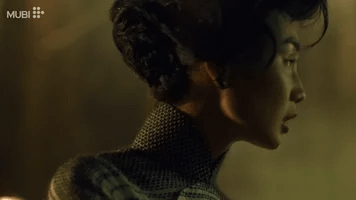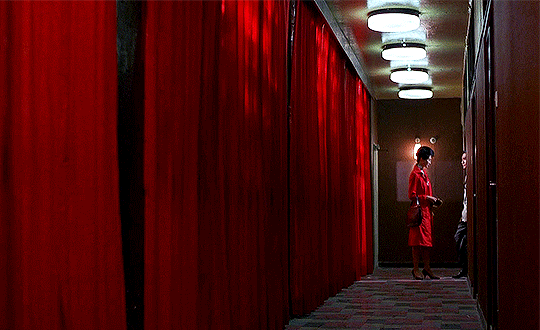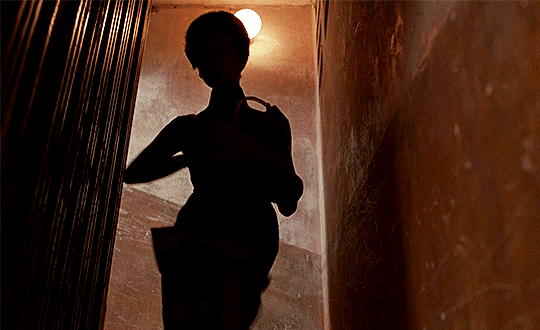Sexy Masterpiece 'In the Mood for Love' Returns to Theaters for 25th Anniversary
WONG KAR-WAI FILM PAYS HOMAGE TO HITCHCOCK
Smoke. Fog. Steam. Rain. “In The Mood For Love’s” lighting is high key but often diffused by these elements. Reality is harsh, truth is stark, we mostly want to live in the light but mostly what we experience, how we see ourselves and others is shadowed and obscured. By fate, design, intention. You choose.
Cinema is about desire; with some films exponentially so. “Casablanca,” “Vertigo” and “In The Mood For Love” explore how desire manifests, expands, empowers, consumes. In each, light captures love’s realization, its expression, darkness its disappointment and despair.
But we get carried away. If you haven’t experienced “In The Mood For Love,” let me first establish its bona fides. Director Wong Kar-Wai’s 2000 film weighs in at number 4 amongst The New York Times Best Films of the 21st Century and, more significantly, scored 5th in Sight and Sound’s Greatest Films (ever) poll. It has inspired such films as Sophia Coppola’s “Lost in Translation”; it occupies an entire universe in Daniel Scheinert and Daniel Kwan’s “Everything, Everywhere, All at Once.”
What began as a concept involving three stories about food or more precisely food technology — of all things the automatic rice cooker and the convenience store — evolved into a tempestous narrative of desire and suppression. In 1962 Hong Kong journalist Chow Mo-wan (Tony Leung) and his wife rent a room in a crammed apartment adjacent to another couple Su Li-zhen (Maggie Cheung), a secretary, and her husband, a businessman. Chow and Su soon realize that something’s amiss, namely their spouses’ frequent trips abroad that are more than coincidental.
Su knows. Chow suspects. One evening they meet surreptitiously, outside the watch of the landlady and other tenants. They compare notes, wonder when it all began, and, mostly through glance and gesture, express their betrayal. Over successive nights they meet in repeated scenes more choreographed than scripted.
Chow and Su encounter each other in a narrow staircase. Cinematographer Christopher Doyle plays with key lights for atmosphere, giving these exterior shots a noirish feel.
“Repetition is how memory works,” Kar-Wai tells Sight and Sound magazine. “The same song, the same stairs – each time, the meaning changes. It’s not nostalgia; it’s haunting.”
If the film is haunting, Chow is the one most haunted and doubly so — first, by his wife’s betrayal, then by his desire for his wife’s lover’s wife. Conflicted, he wants to both preserve Su’s virtue and conquer it, to both idealize and possess her. In this way, “Mood” echoes the film that inspired it.
“Vertigo” follows another obsessed man, Scotty, through various moments of revery and nightmare. The auteur Kar-Wai is an admiring student of the auteur Hitchcock, paying homage to The Master in “Mood’s” themes and visual tropes. Both films are atmospheric, dream-like rather than plot driven. Both depend on similar motifs, particularly the saturated reds and greens that accompany the male gaze.
Kar-Wai plays with the color motifs from “Vertigo,” the famous reds and greens, in much of his film. This scene echoes the production design used for the San Francisco hotel sequences in the Hitchcock film.
Kar-Wai outdoes Hitchcock: symbolic red saturates this shot.
Yet the younger director’s style is decidedly his own. “Mood” employs his signature use of moving camera, slow-motion and spatial cues to convey, in this film, the couple’s confinement and fraught moments of tenderness. While Hitchcock stressed eye-line matches, Kar-Wai emphasizes the expressiveness of hands.
“We’re not making a movie about what’s said – we’re making one about what’s hidden.”
The mise-en-scene often suggests confinement. The foreground elements frame the couple’s embrace. Su’s colorful cheongsam stands out against the gray background.
Eyes and hands. “Hands betray what faces hide,” Kar-Wai relates to Sight and Sound. “A touch, a hesitation. I told Tony and Maggie to let their hands speak. The cigarette, the letter, the hem of a dress… desire lives in those details, and hands don’t lie like faces do.”
Edited at a feverish pace in time for its Cannes screening, “In The Mood for Love” has an unfinished feel about it. Perhaps that is why the director has filmed two sequels, the short “In the Mood for Love 2001” and the feature “2046” released in 2004. Or perhaps Wong Kar-Wai felt at home with his film as unsettled and unsettling.
Finally, it’s imperative that Kar-Wai fans and the curious attend a “Mood” screening in a theater during the re-release: a rarely-seen epilogue to the movie follows the end credits. The short, “In The Mood For Love 2001,” also stars Leung and Cheung and is shot in the style of the director’s 1994 “Chungking Express.”











